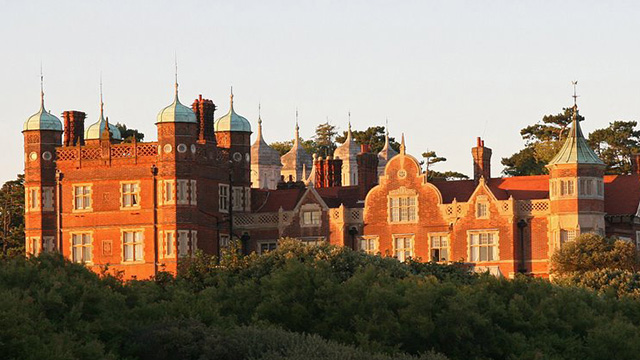From radar to zip wire
A brief history of Bawdsey Manor, our new adventure centre in Suffolk.
As Bawdsey Manor enters a new phase as a PGL adventure centre, we have some exciting plans for developing the site, and we can’t wait to make the most of this spectacular location which has an intriguing history. Here’s the story so far.
To the casual viewer Bawdsey Manor looks like a palace, largely due to its two towers, each with their four turrets and spiked crowns. At first glance it also appears older than it actually is thanks to a mix of Gothic, Elizabethan and Jacobean architecture. In fact, it is none of these; it’s Victorian.
What impresses as much as its design is the location – standing across the river, north east of Felixstowe, with the River Deben estuary on one side and the North Sea on the other.
Origins
Bawdsey Manor was built in 1886 by Sir Cuthbert Quilter, the Liberal MP for Sudbury, art collector and stockbroker. Originally intended as a holiday home, it became the Quilter family home in the late 1890s. After the original manor house was built, extensions were added to it, most notably the red tower in 1895 and the white tower in 1904.
Among the many features in the spacious grounds are the rockeries, grottoes and cliff walk made of Pulhamite – a type of artificial rock invented by James Pulham in the early 19th century. There’s also a circular sunken garden designed by Lady Quilter and built on the site of an old Martello Tower. These squat, circular towers were built during the Napoleonic wars as forts to defend the coast from French attack. A complete Martello Tower can be seen on the other side of the estuary.
Invisible waves
In 1937 Sir Cuthbert’s son, William, sold the entire estate to the Air Ministry who turned it into a training ground and radar research station. The pioneers of radar conducted some of their experiments here and the world’s first fully operational radar station was built a short distance to the north east of the Manor.
The work carried out at Bawdsey radar station played a major part in the Battle of Britain, enabling the RAF to detect the build-up of enemy aircraft over France at a distance of up to 100 miles. As a result they were able to focus their attacks more accurately. This gave the RAF a significant advantage and despite having fewer resources it is estimated that the early warning effect of radar was the equivalent of increasing the capacity of the RAF by a factor of three!
After the War Bawdsey Manor maintained its military function and became an air defence unit. Guided missiles were positioned there to protect the RAF’s V bombers (Britain’s nuclear defence force, some of which were stationed nearby) from air attack.
Into the 21st century
Since 1994 Bawdsey Manor served as a residential international language school under the name of Alexanders College. The school provided English language study combined with outdoor activities for up to 200 students aged 11-18. The school closed in 2016, and now Bawdsey Manor will be developed as a PGL adventure centre, with refurbished, en suite accommodation, plus exciting new activities in the grounds. Further investment and development by PGL will gradually increase the capacity of the centre and the range of facilities.
Booking is open now for adventure camps this summer and for school groups from spring 2018.
Please contact us to find out more about adventure trips to Bawdsey Manor.
We look forward to seeing you.
By PGL Travel.
Get an aerial view of Bawdsey Manor at this video link
 MyPGL
MyPGL 0333 321 2100
0333 321 2100




